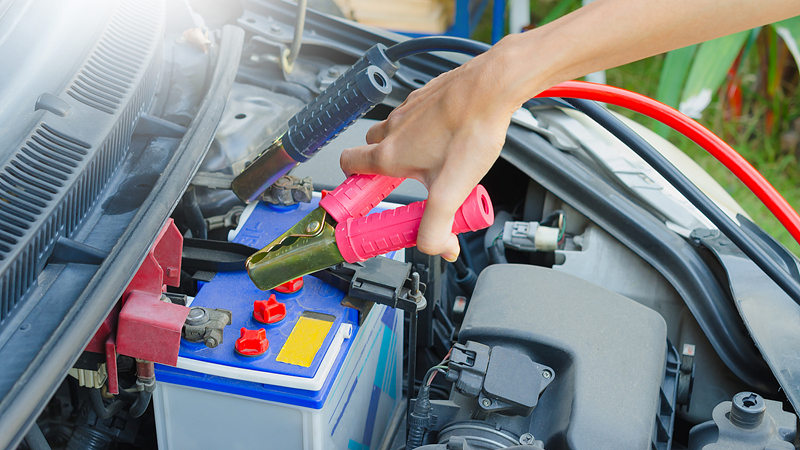Warm Weather Tips To Help Prevent Battery Failure

Summer heat can suck the lifeblood out of your vehicle’s battery. High temperatures and an overtaxed cooling system reduce a battery’s lifespan.
How can you help prevent your vehicle’s battery from failing on your next family vacation?
“If you’ve noticed your engine cranking over a bit more slowly these days, you might want to have your battery checked,” said Tony Molla, vice president of the Texas-based Automotive Service Association. “Corroded battery terminals can interfere with the battery’s ability to recharge and deliver the power necessary to start the engine.
Regular inspection of your vehicle’s battery, terminals and engine cooling system can help prevent failure during warm weather. Visual inspections—such as looking for corrosion on terminals and loose connections—can help keep the system operating properly.
“If you suspect a problem, or if your vehicle is older with the original battery, it’s a good idea to have the terminals cleaned, charging system checked and the battery load tested by a professional technician to make sure everything is operating properly and efficiently,” Molla said.
An automobile’s battery is made of lead and plastic components. It contains an electrolyte solution of sulfuric acid and water. When you turn your car key, the electrolyte solution delivers a short burst of high power.
“If a battery cap is designed for opening, you can do it without much effort,” said Randy Hart, president of BCI and head of Superior Battery Manufacturing in Russell Springs, Ky. “Forcing or prying these caps open may destroy or permanently damage the battery.”
Battery manufacturers provide instructions with their products and all motorists should follow those instructions to assure battery health. BCI suggest following these battery guidelines:
- Find out what kind of battery your car uses. “Maintenance free” batteries do not require adding fluid. Look for user guidelines or a label that warns against opening battery caps. Although it may appear removable, the battery cap may be glued or locked in place.
- “Maintenance accessible” batteries may require adding water in hot climates or high heat. Look for a battery label and follow manufacturer guidelines.
- Check fluid levels and refer to your vehicle owner’s manual. Some batteries have removable battery caps. Others carry a “magic eye” – a small, round device that floats to the top of the electrolyte. Or the battery may be designed as a translucent case so you can check without opening the caps.
- Add fluid if needed (maintenance accessible batteries only). If fluid level is low, use a small amount of distilled water. Do not use tap water. According to Battery Council, tap water may contain chlorine or other chemicals that can change electrolyte composition.
- Inspect terminal connections and cables. Make sure the connections are tight and free of corrosion. Corroded terminals can be cleaned with a brush (such as a discarded toothbrush) and a light paste of household baking soda and water.
- Replace the battery if needed. Batteries eventually fail even if properly maintained. Moreover, heat and heavy loads can significantly reduce life span. Buy a compatible replacement and—if installing it yourself—follow the instructions with the replacement battery.
- Have your vehicle’s charging system and cooling system checked. Problems in your vehicle electrical system can cause a battery to dry out and fail prematurely. Also, overheating in the engine compartment can reduce battery lifespan.